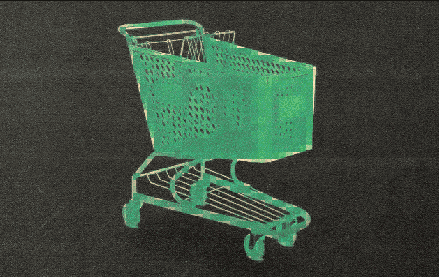Join us Dec. 1-3 in New Orleans for the Digiday Programmatic Marketing Summit
Procter & Gamble wants to break Tide, one of its most recognizable brands, out of the drugstore and turn it into an on-demand, mobile laundry service.
On Monday, the CPG company launched Tide Cleaners, a service that lets customers pre-pay for laundry through an app, drop the laundry off inside lockers or drop boxes inside apartment buildings, offices and retail storefronts, and pick up the clean clothes once the app notifies them they’re ready. Tide Cleaners is currently live in Chicago, Washington, D.C., Dallas, Denver, Philadelphia, Cincinnati, Boston and Nashville.
Tide Cleaners is the most recent example of how Procter & Gamble, like other CPG companies, is extending a brand’s reach beyond the traditional wholesale-retail model and into services, hoping to drive recurring revenue from repeat users. For example, in Chicago, monthly laundry can cost from $1.24 per pound to $1.36 per pound, depending on the plan, or $1.59 per pound with no plan. The work is carried out by a mixture of in-house employees and Tide Cleaners franchise operators, and the company plans to expand to new markets depending on customer demand. Tide Cleaners customers get access to special product formulas and specialized services like color restoration and other personalized offers.
Through the direct model, Tide gains two advantages: owning the relationship with the customer by accumulating information on preferences, including how often they do laundry and if they have special requests, and possibilities for recurring business through discounts from customers who commit to a monthly plan.
“As people are looking to outsource everyday things, there’s an opportunity to bring Tide’s experience into this space,” said a Procter & Gamble spokeswoman. “This is the first time we’ve had people all over the U.S. representing the brand.”
Overall, Procter & Gamble has rethought the role of its brands as it has deepened investments in direct-to-consumer business models. The company is reportedly experimenting with more than 100 seed stage digital-only brands and empowering millennial employees to take charge of the concepts. It’s an approach that lets the company readily test new products and assess how well they’ll do as digital-only brands.
For some of its skin-care brands, including its Facial Treatment Essence product, it has moved away from television ads and into digital and social media-driven marketing with the help of influencers. Like Unilever and Pepsi, the company has also been on an acquisition tear, acquiring personal-care brands L., Walker & Company, First Aid Beauty, and Snowberry over the past year. Tide Cleaners is also the product of two acquisitions: laundry services Pressbox in 2018 and University Laundry the previous year.
To digital marketing consultant Judge Graham, a foray into direct-to-consumer laundry services is a defensive move.
“Tide understands that they have a legacy, old brand, and if it’s not them, others will come up with this idea,” he said. “They get to own this market, and I suspect they’ll see a spike in their traditional retail sales as people perceive Tide as this ‘Uberesque’ sort of innovative brand.”
A delivery service also helps Procter & Gamble learn more about customer habits tied to specific geographies, insights that could inform future product and service design. The company has experimented with laundry delivery services in the past, including Tide Spin, a service it tried in Chicago in 2015, and Juvian, a laundry delivery service it tested in Atlanta in 2001.
“It gives them new, previously untapped data on the demographics and geographies of their most dedicated customers, it gives them an opportunity to test new products, and it gives them insight into [future] acquisitions,” said Jonathan Smalley, CEO of data analytics company Yaguara.
The app-driven service will give customers real-time updates on the status on the orders; the convenience and consistent quality of the service will be the biggest incentive for new customers, the Procter & Gamble spokeswoman said. But despite the appeal of these features, Procter & Gamble’s biggest challenge may be keeping customers, an issue subscription-based startups face.
“We’ve generally been a little bit hesitant with [the promotion] of a lot of the direct-to-consumer models,” said Jake Matthews, research director at Gartner L2. “When you look at the cost of customer acquisition, a lot of the direct-to-consumer companies struggle with customer retention. In order for a subscription model to work, you need to have predictable consumption behavior.”
More in Marketing

Walmart, Target, Kroger swap name brands for private labels in Thanksgiving meal deals
Walmart’s website says its meal costs 25% less than the basket it offered last year, and that the turkey was at the lowest price since 2019.

Amid search wars, Google touts YouTube, display inventory to advertisers
Google is pushing Demand Gen and YouTube to ad partners, hedging against the inevitable erosion of its search business by AI chatbots.

Future of Marketing Briefing: The agentic turn inside programmatic advertising
The arrival of the Agentic RTB Framework this week lands as this week lands as the third agentic standard in under a month.








